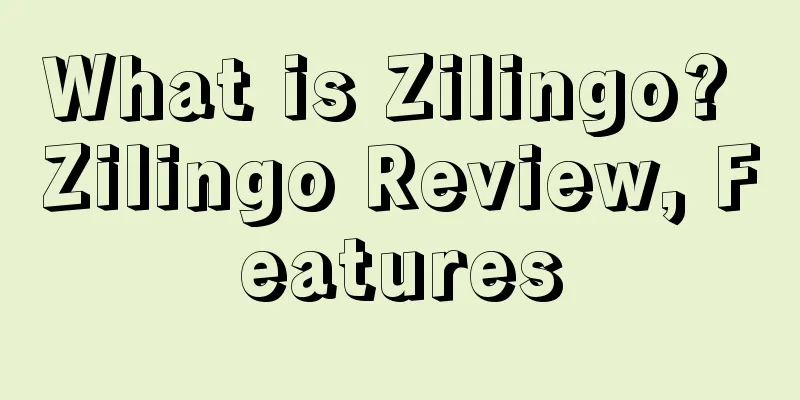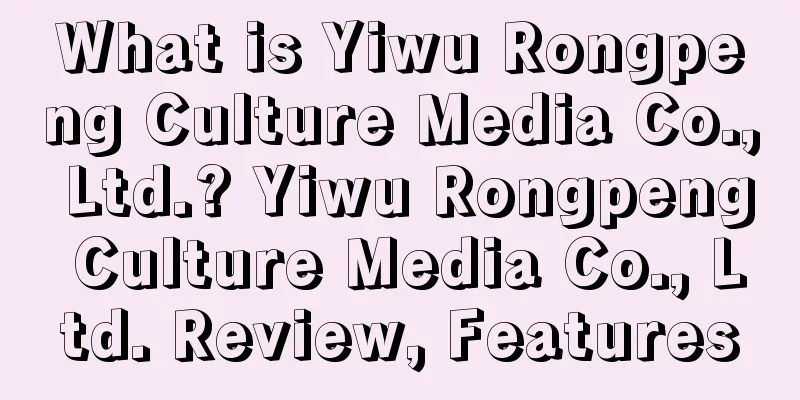What is Zilingo? Zilingo Review, Features

|
Zilingo is a lifestyle e-commerce platform established for the Southeast Asian market. The platform's positioning has been transformed from online sales to a platform for merchants, retailers, and B2C and B2B sales brands.
Zilingo entry channels: http://suo.im/5HOqp9 About Zilingo Zilingo has its own B2C e-commerce website, selling products directly to consumers in Indonesia, Thailand, Singapore, Malaysia, and Australia. Zilingo also has a B2B e-commerce website, selling in bulk directly to potential buyers in Europe and the United States. Zilingo was founded in October 2015 by Dhruv Kapoor and Ankiti Bose, who were inspired by the "maze-like" clothing stalls in the crowded markets while backpacking in Indonesia and Thailand. Their idea was to connect the fashion supply chain for buyers across Asia. Zilingo is an e-commerce platform for fashion and lifestyle products. It is one of the few that can access thousands of sellers of fashion and lifestyle products. Customers can find products that were not easily available before through the Zilingo platform, which is also an important reason for their successful development in the Southeast Asian market. ·On Zilingo, there is no fee for applying for entry; sellers only need to upload SKUs in the seller backend, and the platform will be responsible for opening market sites in Singapore, Thailand, and Indonesia; sellers only need to send items to Zilingo's Shenzhen warehouse; the platform will collect payments through Payoneer every month; merchants can manage their own inventory; Zilingo has no paid advertising mechanism, and provides free promotion and product exposure for Chinese merchants.
develop Zilingo provides a complete e-commerce ecosystem for e-commerce, allowing sellers to focus on what they are good at and create amazing products. For sellers, Zilingo provides a full set of payment options, inventory management, video production, marketing campaign support, etc. For buyers, Zilingo links more than 2,000 sellers from all over the world, provides online payment and cash on delivery, discover trends through videos, free returns, user recommendations, personalized browsing experience, and wish lists. Zilingo has two business models: B2B and B2C. Among Zilingo users, 33% are repeat buyers and 45% are repeat users. The data reflects the loyalty of Zilingo users. Currently in Southeast Asia, Zilingo is a leading platform for user engagement, with a bounce rate of 28%, a buyer's visit stay time (in minutes) of 5 minutes and 26 seconds, and the number of styles viewed by buyers during their visits is 6.3 styles. There are now more than 6,000 small businesses from China, Thailand, Indonesia, and Singapore on the Zilingo B2C website, selling products including clothing, accessories, bags, shoes, and daily necessities. At the same time, offices have been established in five countries and regions, including Singapore, Thailand, Hong Kong, Indonesia, and India. Currently, Zilingo's monthly sales growth rate remains at 30%, and it has achieved a monthly sales growth of more than US$5 million. At the same time, Zilingo also has more than 2.5 million B2C users in Southeast Asia.
feature Zilingo has two major services: B2B and B2C. From the buyer's page, Zilingo is just an ordinary e-commerce company, nothing special. But it is very different on the seller's side. Its business ecosystem consists of six parts: 1. Zilingo Asia Mall (ZAM): This is Zilingo’s most ambitious service, an integrated solution for buyers, including procurement, sales, quality control, customer service and credit. 2. Label by Zilingo: This service is aimed at celebrities, Internet celebrities, fashion designers, etc. For example, many KOLs want to have their own clothing brands; however, they know almost nothing about manufacturers, supply chains, and sharing systems, and Zilingo has also opened up this link. 3. Zilingo: B2C e-commerce for individual customers. 4. Z seller: It is a SaaS tool used by sellers. Sellers can use it to manage all businesses on Zilingo, from procurement to inventory management, from pricing to transportation, distribution, as well as value-added services such as marketing and finance. 5. Z trends: buyer, procurement, photography and other services. 6. Fz: Fintech services, such as loans for sellers.
Financing History -In November 2015, Zilingo received US$1.9 million in seed round financing from Sequoia India. -In September 2016, Zilingo received US$8 million in Series A funding led by existing investor Sequoia, with participation from Indonesia’s Venturra Capital and Hong Kong-based SIG. -In September 2017, Zilingo completed a US$18 million Series B financing round led by Sequoia Capital and Burda Principal Investments. -In April 2018, Zilingo received US$54 million in Series C funding, led by Burda Principal Investments, Sequoia India and Sofina. -In February 2019, Zilingo received US$226 million in Series D funding from investors including Sequoia Capital India, Temasek, Burda, Sofina, Edbi, etc. |
<<: What is Two-Step Verification? Two-Step Verification Review, Features
>>: What is the Flywheel Effect? Flywheel Effect Review, Features
Recommend
Say goodbye to inefficient marketing. Brand merchants such as Zwilling and Manxi leveraged Alibaba Mom to achieve super high returns during 618
The 2021 Brand Enterprise 618 Promotion Insight R...
European cross-border e-commerce sales reach $146 billion
According to foreign media reports, the European ...
Over the past year, the European market has seen a 10% increase in "new online shoppers"
How much ground is left to be won for merchants ?...
Acquisition of Forever 21's parent company shares, SHEIN's industry ecosystem welcomes another positive
NEW YORK, August 24 – SPARC Group Holdings II LLC...
Temu just raised its price, Trump reversed and restored the $800 tax exemption
It changes three times a day, and people crossing...
Amazon orders have dropped sharply, and sellers’ inventory capacity has been cut in half again!
On the first Monday of September, Amazon sellers’...
A 24-year-old girl sold "slogan clothing" and made more than 1.8 million in a single day!
As we all know, as a red ocean market, the clothi...
What is Nobull? Nobull Review, Features
Founded in 2015, Nobull is a niche brand in the U...
What is MTL in each US state? MTL in each US state Review, Features
MTLMoney Transmitter Licensing license for each st...
Walmart's Q2 earnings beat expectations, but online sales growth slowed
On August 17, Walmart released its second quarter...
New brand "fishing", Nirvana band issued two cases in a row and many sellers were deceived
The editor found that many law firms have been fi...
With the number of new cases exceeding 1,200 in a single day, Osaka, Japan may enter a state of emergency
According to a report by Japan's Kyodo News o...
Last-mile congestion! US intermodal rail yards clogged
Recently, due to congestion in the Chicago area r...
What is Orange sellers? Orange sellers Review, Features
Orange sellers is an Amazon accelerator. About Or...
What is Crov Dropshipping? Crov Dropshipping Review, Features
Crov Dropshipping App simplifies your order proces...









